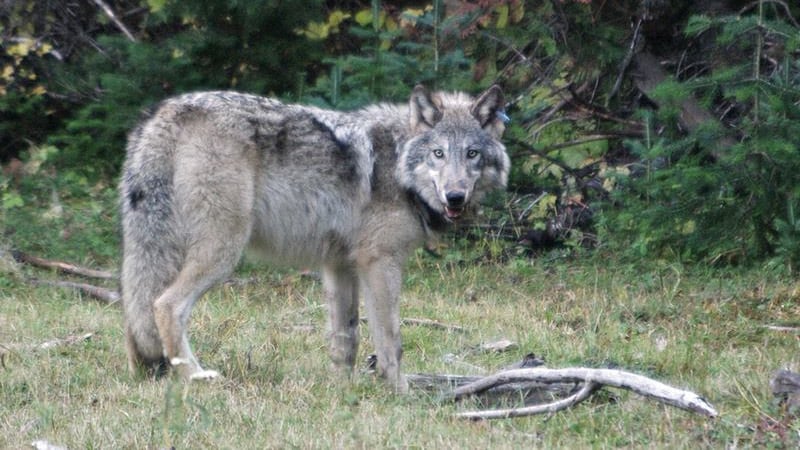In 1997, a wolf entered Oregon for the first time in over 50 years, by swimming across the Snake River. That wolf was promptly darted and hauled back to Idaho. But, by 2007 small packs began establishing themselves in Oregon—namely in the eastern part of the state.
Until now, only single migrating wolves had been spotted in the Mt. Hood National Forest area.
On January 4, an image captured in the northern part of the Cascades by the Oregon Department of Fish and Wildlife revealed a pair of wolves traveling together.

The discovery will likely stoke the conflict between rural people and conservationists who argue the species deserves protecting. It's a battle that's been brewing for over a decade, with both sides vying to influence the state's gray wolf management plan, which is constantly undergoing revision.
At last count, at the end of 2016, the number of wolves known to inhabit Oregon was 112. That number had grown by only two from the year prior, and environmental groups like Eugene-based Cascadia Wildlands blame wolf poaching sprees for the low population number.
Ranchers, conversely, blame wolves for eating their livestock and are sometimes given permission by the ODFW to hunt packs.
For now, the discovery of the wolf pair's migration into the Cascades is a victory for environmentalists.
"It is heartening to see gray wolves continuing to reoccupy historic territories across the Northwest after they were exterminated nearly a century ago," says Josh Laughlin of Cascadia Wildlands. "It also underscores the need to maintain safeguards for this unique species that continues to be under fire by special-interest groups and politicians."
Cascadia Wildlands has been promoting wolf conservation in the Pacific West since 1998. Part of its goal, Laughlin says, is to bring wildness back to the Oregon Cascades landscape. The sighting of the wolf pair is a good first step.
According to Laughlin, "it won't be long before backcountry travelers get to experience the unforgettable howl of a wolf by the campfire on Mt. Hood."
